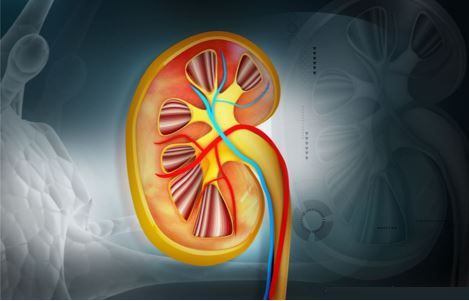- Clinical Technology
- Adult Immunization
- Hepatology
- Pediatric Immunization
- Screening
- Psychiatry
- Allergy
- Women's Health
- Cardiology
- Pediatrics
- Dermatology
- Endocrinology
- Pain Management
- Gastroenterology
- Infectious Disease
- Obesity Medicine
- Rheumatology
- Nephrology
- Neurology
- Pulmonology
Chronic Kidney Disease Linked to Increase in Incident Diabetes
Renal damage, blood glucose level, family history--which was independently linked to incident T2DM in CKD? Read the study highlights.
©ramcreations/Shutterstock.com

The incidence of type 2 diabetes mellitus (T2DM) is markedly higher among individuals with chronic kidney disease (CKD) than in the general population, according to a recently published analysis of a long-term, observational cohort study.
The incidence rate was 17.81 cases per 1,000 person years in this analysis of individuals in the Chronic Renal Insufficiency Cohort (CRIC) study, according to Christopher Jepson, PhD, a biostatistician with the University of Pennsylvania, Philadelphia, and co-investigators.
By comparison, incidence rates of 1.6 to 12.7 T2DM cases per 1,000 person years have been documented in studies looking at the general population, Dr Jepson and colleagues said in a discussion of their study, which appeared recently in the American Journal of Kidney Diseases.
Family history of diabetes and baseline fasting blood glucose levels were independently associated with incident diabetes, Dr Jepson and colleagues also reported in the journal.
Taken together, these findings support “greater vigilance” forT2DM in patients with CKD, the investigators concluded.
Incidence rate elevated
Their analysis of CRIC study participants included a total of 1,713 individuals with CKD who did not have diabetes at enrollment. Over a median follow-up of nearly 8 years, 203 (11.85%) of those individuals developed incident T2DM over 11,399 person years.
That translated into the reported overall unadjusted incidence rate of 17.81 cases per 1,000 person years, which was even higher (18.95 cases per 1,000 person years) when including patients who developed diabetes after the onset of end-stage renal disease, investigators said.
The incidence rate was lower for individuals with baseline fasting blood glucose levels <100 mg/dL, at 12.17, and higher among those with levels between 100 and 125 mg/dL, at 46.55, according to the report.
Blood glucose, family history links
Blood glucose was independently linked to incident T2DM in multivariable analysis, with a hazard ratio of 1.407 (95% CI, 1.135-1.744; P = 0.002). The only other factor to be independently associated with incident diabetes was family history of diabetes, with a hazard ratio of 1.50 (95% CI, 1.033-2.172; P = 0.03). By contrast, indicators of kidney function and damage were not associated with incident diabetes.
The incidence rate of 17.81 cases per 1,000 person years in this analysis was considerably lower than the 38 cases per 1,000 person years reported in the African American Study of Kidney Disease and Hypertension (AASK), as previously reported (2006) in JAMA Internal Medicine.
However, it remains considerably higher than the rate seen in general population studies, such as the Tromsø study in Norway, which reported age-adjusted incidence rates of 1.6 per 1,000 person years for women and 2.6 for men, and the Atherosclerosis Risk in Communities (ARIC) Study, which reported a rate of 12.7 for individuals between the ages of 45 to 64 years, including some individuals with pre-diabetes.
Predicting diabetes
Dr Jepson and co-investigators evaluated the predictive performance of multivariable models that they developed based on baseline fasting blood glucose and other predictors commonly used in diabetes risk assessment, including blood pressure, cholesterol and triglyceride levels, and body mass index, among others. Those models, they found, had lower predictive performance compared with similar models based on populations of patients without CKD.
The reason for poorer performance was not clear, though it may have had something to do with the population of this particular study, which was restricted to individuals with CKD, who were therefore older and sicker than in the previous analyses.
Moreover, there was a relatively low concordance between baseline measures of glycemic control in these patients with CKD, the researchers reported, saying that identifying the best glycemic marker in this disease needs to be a focus of future research.
Source: Jepson C, Hsu JY, Fischer MJ, et al. Incident type 2 diabetes among individuals with CKD: findings from the chronic renal insufficiency cohort (CRIC) study. Am J Kidney Dis. 2019;73:72-81. doi: 10.1053/j.ajkd.2018.06.017. Epub 2018 Sep 1.
